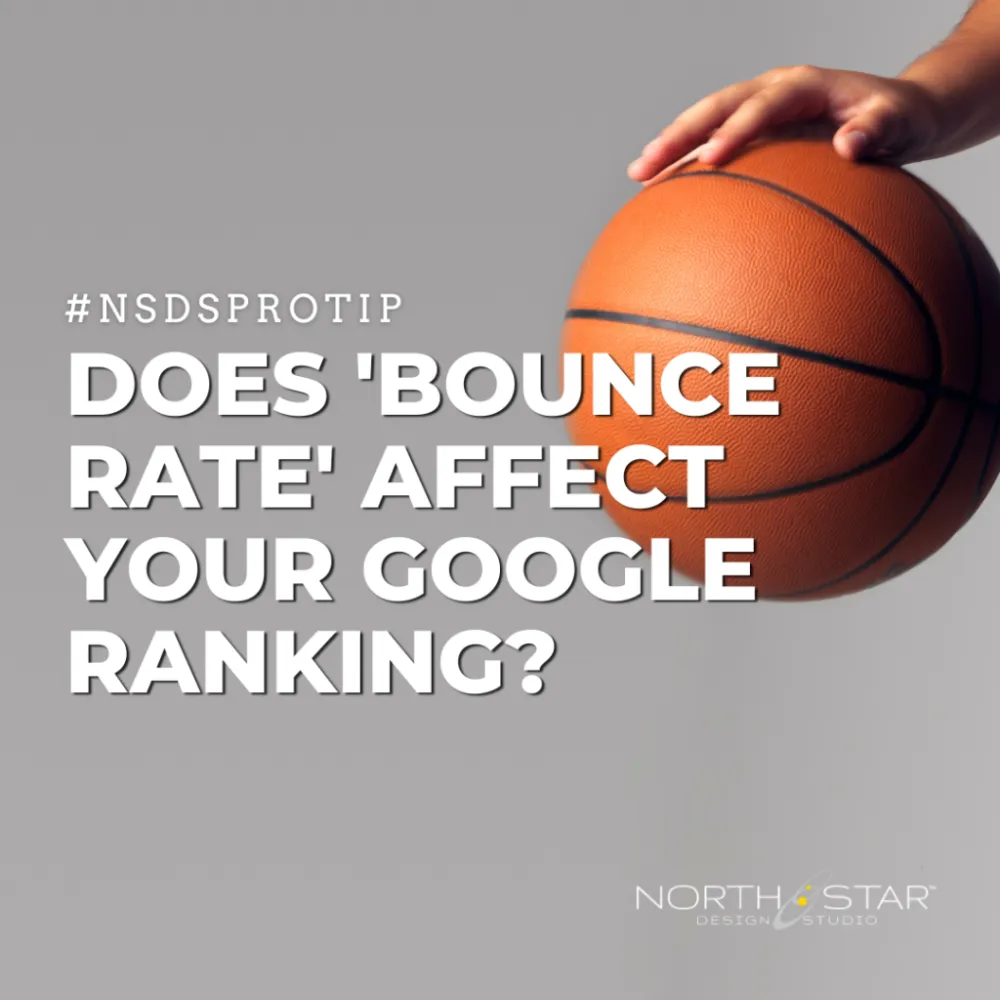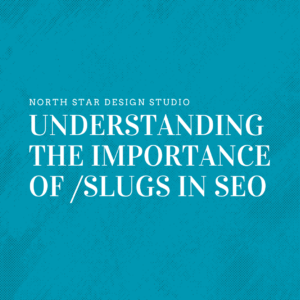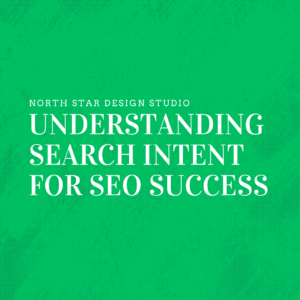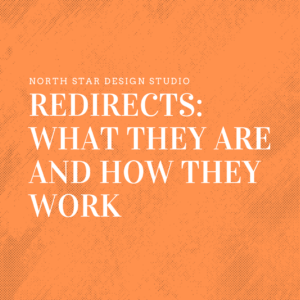The rate of one-page visits to your website is referred to as the bounce rate. This statistic is used by SEM and SEO teams to assess the engagement and user experience of a web page.
A high bounce rate could be alarming as it often reflects that your website has poor usability, uninteresting content, slow page speed, or unnecessary plugins. An improved web design and a well-planned SEO strategy can reduce your bounce rate and help indirectly improve your Google search rankings.
This article discusses the causes of high bounce rates, why they are bad, and how to reduce them.
What is the Bounce Rate?
Say a friend messages you while you’re in the middle of something so you look at your phone for a few seconds and then get back to work, that’s your bounce rate.
A bounce rate is an important statistic that reflects the number of visitors who come to your website and leave immediately. Visitors may leave your site quickly, opting to browse through other search results or close their browser.
If you were to do some research on this topic, you’d find that many people have different definitions for what exactly constitutes a bounce rate. For example, some people might say that any visit shorter than 30 seconds counts as a bounce, while others might say it refers only to the visits shorter than 10 seconds.
Still, other people might argue that any visit that doesn’t result in any action, such as making an order or filling out an application, should count towards your bounce rate.
No matter how long someone spends on your site before leaving, if they failed to take any action or convert, we think it’s safe to say they bounced off though the longer they’re on the website the more likely it seems that they’ll come back!
Does Bounce Rate Affect Search Engine Optimization of Your Website?
Is bounce rate a Google ranking factor? Google has publicly stated that the overall bounce rate does not directly impact organic ranking, nor is it an SEO factor. However, it is possible that Google uses other relevant SEO signals that are impacted by bounce rate to rank websites. So, in practice, the bounce rate metric can impact those underlying SEO factors and cause lower search engine ranking (similar to the ‘social proof‘ effect).
How to Find Your Bounce Rate in Google Analytics?
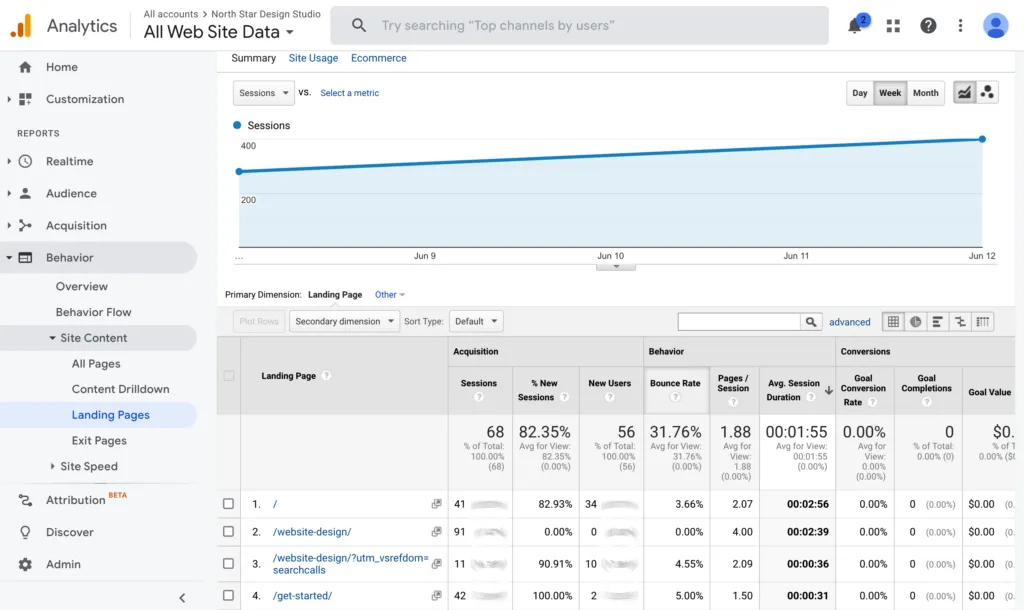
Log in to your Google Analytics account. Click at the Behavior icon, then click “site content.” Choose the option of “landing pages report” and add “Bounce Rate” as a metric.
It’s also possible that your WordPress website has a built-in analytics tool or related plugin that can also show you bounce rates and other interesting data. MonsterInsights has some great features but there are many WordPress plugin options to choose from.
Is a High Bounce Rate Always Bad?
Is it a negative thing to have a high bounce rate? Not always. You must consider the search intent behind each page before analyzing this metric.
For instance, your homepage most likely gets a significant amount of traffic through branded search as well as direct visits and referrals. Because of this, customers frequently need to delve deeper in order to discover more about what it is that your company does. Consequently, the home page usually has a lower bounce rate.
Blog entries, on the other hand, tend to be more informative. Due to the fact that long-form material makes it possible to address subjects in greater depth, the visitors do not often go to other pages of that website. So a high bounce rate might not be bad in this case. However, the average time a user spends on a blog article indicates if it is engaging or not.
According to a HubSpot article, the average time a user spends on a blog article is 3 to 5 minutes. That gives us an idea on how much time a user should spend on an interesting and informative blog post. If the users are spending less time on a blog post, maybe a few seconds before bouncing off, it tells us that this article is not engaging.
So how do we use this data to reduce our bounce rate? For beginners, you can use data from Google Analytics and see how long your users are spending on different articles. Find out the most engaging articles and from there, you can decide whether or not you want more articles like those on your site. Refining your content strategy in the light of analytics can help in reducing bounce rates.
A high bounce rate in an e-commerce store is quite normal. As a visitor is looking for specific items, she doesn’t check the other product pages once she finds out what she is looking for. In this case, you’re looking to find a relation between page visitors and conversions.
Likewise, it is not uncommon for someone to come to your website seeking an address or company hours. If that business receives a call or a visit from a potential customer, it would be considered conversion, even if the buyer doesn’t actually spend money or stays on the web page for too long.
The issue arises when a visitor lands on your website to find some information about a product or service, then immediately leaves due to poor web design or bad content. These are the potential customers that you want to focus on.
Determine the reason why they quit so fast and fix those issues.
Reasons for a High Bounce Rate
A high bounce rate can be really bad. In fact, it is like a broken heart: avoidable if you’re willing to acknowledge the warning signs.
The following are some of the reasons why a high bounce rate is bad.
1. Content and Intent are not Aligned
Sometimes what you are communicating is not of any value to your audience. Most commonly this happens when content isn’t focused on the benefit or value of X product/service. Instead, the content is focused on features and factoids. Sometimes it’s even braggadocious, unintelligible, and generally missing. The information contained on the website just does not give your audience the answers they need to make a purchasing decision.
For instance, if someone searches for “best recipes to cook pasta” and they land on a web page that gives them the history and origin of pasta, they would leave immediately.
The best way to determine the search intent behind a particular query is to analyze the search results of competitors ranking for that query. The content of these top-ranking competitors will give you a good idea of the sub-topics your content should focus on. This means more organic traffic, engagement, and conversions.
2. Slow-loading websites
Slow-loading websites result in a high bounce rate. If the load time of the website is excessively slow, the visitors will leave the page before they even have a chance to read the content of the page.
You may improve the speed of your page by doing any one of the following:
- Eliminate any unnecessary third-party scripts.
- Upgrade to a web host that can handle more traffic
- Take away any components of the website that are particularly huge and cause it to load more slowly, such as images, GIFs, etc.
- Take off unnecessary third-party scripts.
- Implement caching in the browser so that the visitors don’t need to refresh their browser multiple times.
3. Too Many Advertisements

Lots of advertisements make your users immediately click the back button on their browsers as soon as it loads.
What do we mean by ‘advertisements’? Multiple pop-ups on the same page offer different opt-in options or notifications of events and services. This can also mean those good old fashion ‘retargeting’ ads that eat up the sidebars or pop up over the above-mentioned recipe pages (so annoying!!)
The presence of several advertisements on a page slows down the loading speed and results in a bad user experience. Sometimes the advertisements impact web design and make it difficult for people to browse the page. Users are irritated by this and leave the website.
If your website displays advertisements, ensure that they do not interfere with the user experience in any way.
4. Insufficient Information
Your online visitors will have no reason to stay on your website if the information on your site is out of date and lacking in depth. After all, if customers have a negative first experience on your website, why would they want to explore it any further?
You need to have high-value, high-quality content that not only exhibits your knowledge but also covers the subject at hand in an in-depth manner.
Bounce Rate Vs. Exit Rate
If someone lands on a web page and navigates to another page, then quickly exits, this behavior is called exit rate. On the other hand, bounce rate is the number of single-engagement sessions a webpage has.
A bounce occurs when a person visits your website, navigates to page 1, and then uses their browser’s back button to return to the page that referred them to your site. But this is deemed an exit if the user lands on page 1, navigates to page 2, and then either closes their browser or goes to another website after that.
When it comes to website performance, no metric is more important than your exit rate.
While other metrics like bounce rate or time on site can give you a general idea of how people interact with your website, exit rate is the most exact and reliable indicator of whether or not your site is serving its purpose.
Exit rates are a signal that something more serious is going on with your website and, more specifically, with your sales or conversion funnel. Understanding what’s happening with your exit rate can help you identify the root cause of problems and make necessary changes to improve business performance.
6 Tips to Reduce Bounce Rate of Your Website
1. Improve User Experience
The first step in lowering your bounce rate is to make sure your website is easy to use. This requires the website to have a professional design, high-quality photographs on the landing page, social evidence (testimonials, reviews, and the like), and a simple navigation menu.
2. Create Content According to User Intent
Make sure that your content matches visitor expectations. If you’re selling swimsuits online but don’t show any pictures of people wearing them on your website or blog posts about how much fun it is swimming while wearing one-and; instead, just talk about how great they are at keeping water out-visitors will probably be confused by what they see on screen.
3. Invest in a Good Website Design
A good website design will keep visitors on your site for longer, and it will make it easier for them to find the information they’re looking for. This requires the website to have a professional design, photographs of high quality, and social evidence (testimonials, reviews, and the like).
4. Provide Easy Navigation
Make your navigation easy and effortless. The menu should be simple and guide the visitors to go to the next page and easily find what they’re looking for. Include all of your contact information, in addition to specific information about your brand and the people that stand behind it, to strengthen visitors’ faith in your brand.
5. Make your Website Mobile Friendly
Did you ever land on a website and then leave without even looking at the content?
If you’ve ever done this, it’s probably because the site wasn’t mobile-friendly.
A lot of people-particularly those on their phones, don’t have time to wait for a website to load. If your site takes forever to load, or if it doesn’t look good on mobile devices, people will skip right over it.
Higher bounce rates can be bad for your business because it means fewer people will see what you’re selling or learn about who you are as a company and what sets you apart from other brands in your industry.
6. Improve Internal Linking/Siloing
Internal links are like the force. They’re strong, they’re mysterious, and they reduce your bounce rate.
That’s because internal links are the invisible hands of your website. They’re what connect different parts of your site together and make sure that people can find their way around. But did you know that there’s more to internal linking than just helping people navigate? Internal links also have a huge impact on SEO, SERP rankings, and bounce rate.
A good internal link strategy can help boost your rankings in search engines by directing users to other pages on your site—and since search engines like Google want to show you the most relevant results first, this is a good thing!
It also helps keep visitors on your site longer: when visitors click through from one page to another within the same domain (or subdomain), they’re less likely to leave before making a purchase or downloading an ebook or other resources.
Key Takeaway
Manage your site’s bounce rate with constant evaluation and thorough maintenance.
Post content that solves the problems of your website’s visitors and answers their questions. Improve the internal linking structure of your website, make it easy to navigate, and optimize it for search engines as well as human beings to keep the bounce rate low.
When you’re ready to take a look under the hood of your own website, try this free tool for auditing your website. You’ll be able to watch in real-time as your site is reviewed and a report will automatically be emailed to you.
Ready to take your business in the right direction with professional website development services? Get started here.

